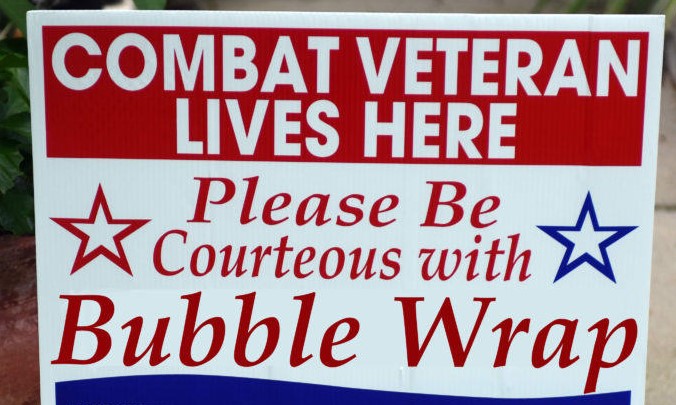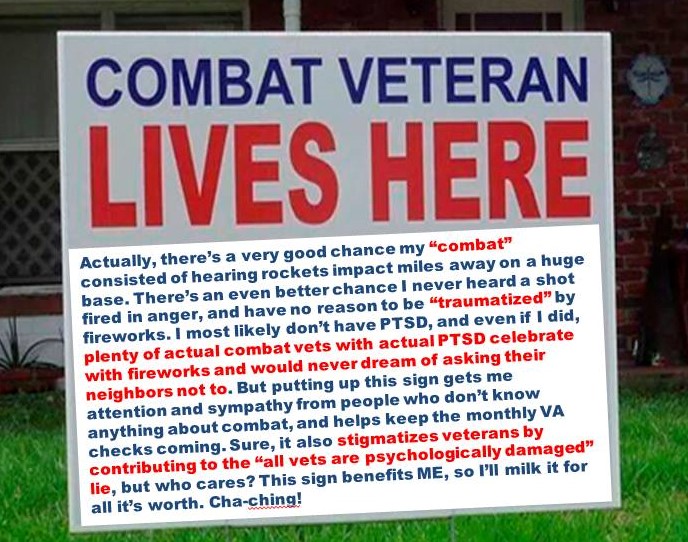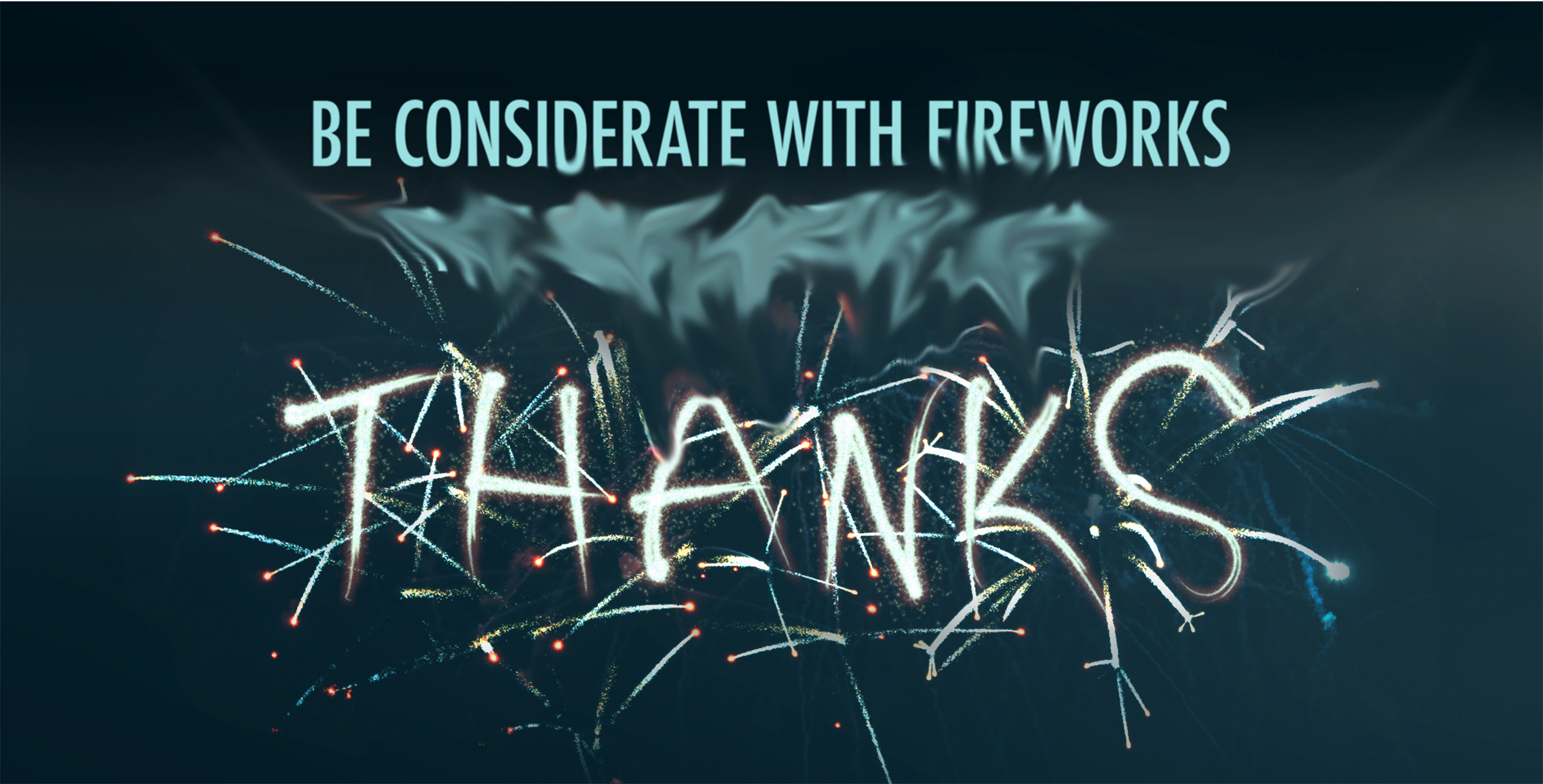
I simply responded to a social media post. It was a meme complaining that there would be no fireworks this year on the 4th and I commented that a lot of Veterans out there would be thankful. The response that followed surprised me: “I don’t know of any Veterans that would be disturbed by fireworks.” Over a week later, I’m still pondering this.

With all the articles, research and support groups dedicated to our Veterans struggling with Post Traumatic Stress Distress (PTSD) there are still so many that just don’t get it. As I dug deeper, I was shocked to find articles (written by Veterans) that oppose extending courtesies to their fellow Veterans with PTSD. Those who have lawn signs asking neighbors to be mindful with fireworks were considered weak, saying “That the message reinforces the worst stereotypes of Veterans: that they’re all broken, that they’re attention-mongers, that they think they’re different and special, and that the American people should bend to their whims simply because they served.”
While I personally disagree with this way of thinking I was also enlightened and now have a better understanding as to why a Veteran would choose not to get help for these invisible war wounds. The sigma of PTSD still exists and because of this a Veteran could choose to suffer in silence.
Stand For the Troops (SFTT) has always worked to combat this stigma and will continue to support our Veterans with PTSD – and encourage people to be mindful during any holiday or celebration that includes fireworks. We all need to remember that sudden and loud noises like fireworks can trigger PTSD for Veterans who experienced traumatic events during their service. According to the U.S. Department of Veteran Affairs, up to 20 percent of military personnel who served in Iraq or Afghanistan experience PTSD each year, a syndrome that is not something to be dismissed as weak.
This year COVID-19 may have cancelled public July 4th displays, but fireworks were sold on every street corner and even in grocery stores. The paper goods isle may not have toilet paper but it was stacked full of explosives. This year Veterans don’t have the choice to stay home and away from public fireworks displays because it seems everyone is well armed. In my neighborhood you hear blasts 24/7 and not just around the 4th of July, it’s been happening since April. Perhaps it’s the non-graduation ceremonies and lack of group celebrations or boredom, but please let’s be mindful and considerate of our Veterans.
For our struggling Combat Vets, PTSD does not make you weak or broken, but sadly it seems posting a sign claiming your dog is afraid of fireworks, will be more effective than explaining you’re a Veteran.

PTSD FACTS
According to the National Institutes of Health, Department of Veteran Affairs, and Sidran Institute, the societal and economic burden of PTSD is extremely heavy. Important facts, numbers, and statistics include:
- The annual cost to society of anxiety disorders is estimated to be significantly over $42.3 billion, often due to misdiagnosis and under treatment. This includes psychiatric and non-psychiatric medical treatment costs, indirect workplace costs, mortality costs, and prescription drug costs.
- People with PTSD have among the highest rates of healthcare service use. People with PTSD present with a range of symptoms, the cause of which may be overlooked or misdiagnosed as having resulted from past trauma.
- Much of the general public and many mental health professionals used to doubt whether PTSD was a true disorder.
- In 1980, PTSD was recognized as a disorder with specific symptoms that could be reliably diagnosed and was added to the American Psychiatric Association’s Diagnostic and Statistical Manual of Mental Disorders.
PTSD is recognized as a psychobiological mental disorder than can affect survivors not only of combat experience, but also terrorist attacks, natural disasters, serious accidents, assault or abuse, or even sudden and major emotional losses - PTSD is associated with changes in brain function and structure and these changes provide clues to the origins, treatment, and prevention of PTSD. Some cases may be delayed, with only subtle symptoms showing up initially and more severe symptoms emerging months after the traumatic event.
- PTSD affects about 7.7 million American adults in a given year, though the disorder can develop at any age including childhood. Symptoms include strong and unwanted memories of the event, bad dreams, emotional numbness, intense guilt or worry, angry outbursts, feeling “on edge,” and avoiding thoughts and situations that are reminders of the trauma.
- PTSD was once considered a psychological condition of Combat Veterans who were “shocked” by and unable to face their experiences on the battlefield.
Soldiers with symptoms of PTSD often faced rejection by their military peers and were feared by society in general. - Those with PTSD symptoms were often labeled as “weak” and removed from combat zones, or sometimes discharged from military service.
- In addition to providing healthcare to about 5 million Veterans each year, the Department of Veterans Affairs (VA) also funds research that focuses on the specific health conditions that Veterans may experience. One condition that>is examined in VA-funded research is post-traumatic stress disorder (PTSD); an anxiety disorder that can occur after a person is exposed to a life-threatening event. Veterans diagnosed with PTSD may experience problems sleeping maintaining relationships and returning to their previous civilian lives.
Almost 50% of all outpatient mental health patients have PTSD. - For comparison, according to a 2009 report prepared by ORD staff for VA’s National Research Advisory Council or fiscal year 2009, funding for intramural traumatic brain injury research was about $14.6 million, 2.9 % of the medical and prosthetic research appropriation. Funding for spinal cord injury research was $27.2 million, 5.3 % of the medical and prosthetic research appropriation. Funding for intramural cardiovascular disease and stroke research>was $53.1 million, 10.4 % of the medical and prosthetic research appropriation.
- According to VA, experts estimate that up to 20 % of Operation Enduring Freedom and Operation Iraqi Freedom veterans, up to 10 % of Gulf War Veterans, and up to 30 % of Vietnam War Veterans have experienced PTSD Consequently, demand for PTSD treatment continues to grow.
In the past year alone the number of diagnosed cases in the military jumped 50% and that’s only the reported and diagnosed cases. - 17% of combat troops are women; 71% of female military personnel develop PTSD due to sexual assault within the ranks.
Source: http://www.ptsdunited.org/ptsd-statistics-2/

JUL
2020

About the Author: